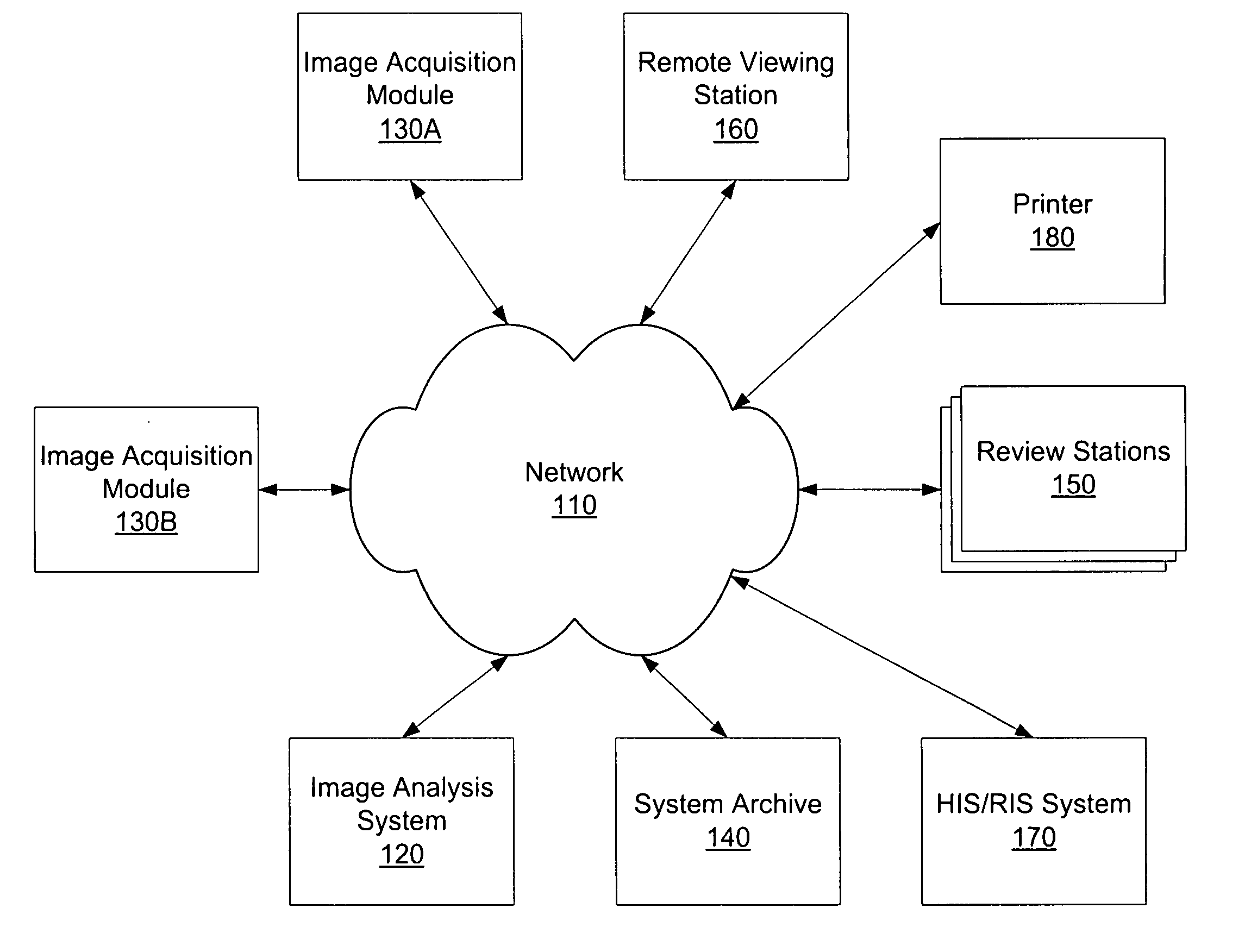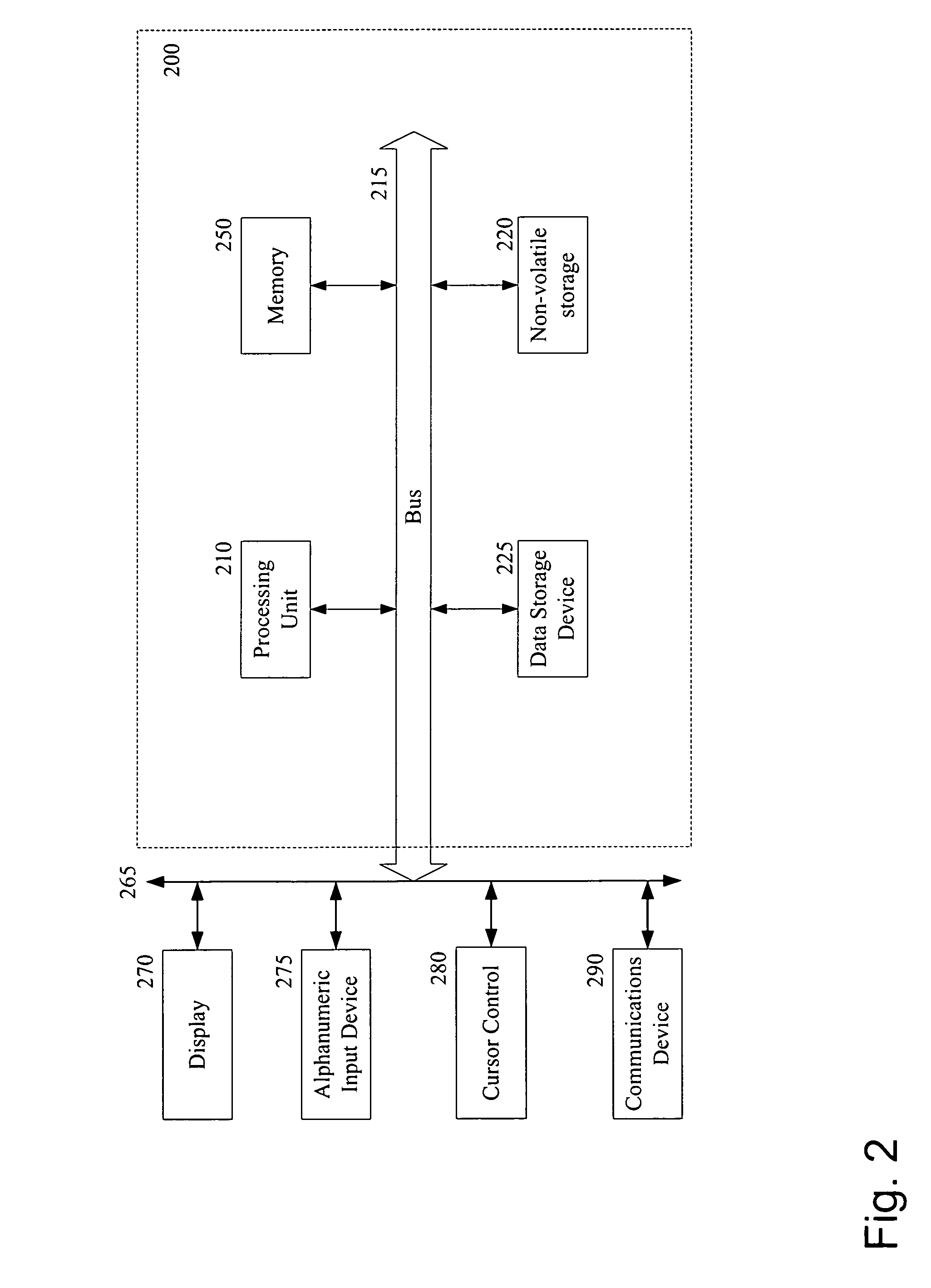Method and apparatus for an improved computer aided diagnosis system
a computer aided diagnosis and integrated system technology, applied in the field of computer aided diagnosis, can solve the problems that digital image acquisition devices cannot be interfaced with such cad systems, and reduce the use of such cad systems, and achieve the effect of uniform display quality
- Summary
- Abstract
- Description
- Claims
- Application Information
AI Technical Summary
Problems solved by technology
Method used
Image
Examples
example 1
[0124]
Input=PVraw=gE (Equation 5)
[0125]In order to map this response to the form of equation 3, three steps are taken:[0126]a) raw pixel values are converted to Log pixel value[0127]b) the contrast or slope is adjusted to the “canonical” slope[0128]c) the response is normalized (the level is adjusted) to the “canonical” level or data range.
[0129]The first step in this procedure can be accomplished by using the equation:
PV=log(PVmax / input)*PVmax′ / log(PVmax) (Equation 6)
[0130]In equation 6, PVmax is the maximum pixel value of the input data, often 14 bits for present devices, and PVmax′ is the maximum pixel value it is desired to map the input to, such as 12 bits. The dependence of PV on log of input is depicted as “curve 1” in FIG. 8B.
[0131]This response is going to be converted into the “canonical” slope desired. This can be accomplished by multiplying by a constant G chosen empirically to match slopes with the desired “canonical” response of equation 3:
PV=log(PVmax / input)*PVmax′ / ...
example 2
[0146]Next, consider the pre-processing changes required to accommodate a different digital detector, with a different gain. Suppose two detectors with different responses are used. The responses are given by:
Input1=g1*E
Input2=g2*E
[0147]Using equation 8 then gives:
PV1=4095G−ln(input1)*G−X=4095G−ln(g1E)*G−X
PV2=4095G−ln(input2)*G−X=4095G−ln(g2E)*G−X
So
ΔPV=PV2−PV1=ln(g2 / g1)*G (Equation 12)
[0148]That is, changing to a detector with a different gain can be taken into account with a simple shift in pixel value which will automatically be performed when equation 8 is performed with the correct shift (X) to normalize the 2 sets of data. It remains to describe the best way to obtain the shift value X.
[0149]As discussed above, the shift is equivalent to setting the overall “OD” of the image to the user's preferred standard. For the preferred “canonical” level, a pixel value of 2400 is chosen, which is equivalent to a film OD of approximately 1.6. Therefore, in one embodiment, a “contrast”...
example 3
[0150]One final example will suffice to cover all the cases anticipated, and that is the proper normalization for a different film response, or a digital “processed” data. In many of the commercial devices (such as chest CR machines) on the market today, the raw digital data is not archived, and in some cases cannot be communicated to a system such as this invention. In that case the images typically already have a tone scale applied, which makes the data response similar to equation 1, but in general with a different value of slope or y. Therefore, the problem is reduced to determining how to make a “film-like” response equivalent to the “ideal” response with the “canonical” slope (1272 above), and mean PV. From equation 1:
PV=4095−(4095 / Dmax)*γ*log(E / E′)
[0151]A value of Dmax of 4.2 and γ of 3 are assumed. However, if this changes, a different slope is obtained. From equation 1,
PV1=4095−1272*ln(E / E′)[0152]Would change to:
PV2=4095−S*ln(E / E′)
[0153]The new value of slope can be determi...
PUM
 Login to View More
Login to View More Abstract
Description
Claims
Application Information
 Login to View More
Login to View More - R&D
- Intellectual Property
- Life Sciences
- Materials
- Tech Scout
- Unparalleled Data Quality
- Higher Quality Content
- 60% Fewer Hallucinations
Browse by: Latest US Patents, China's latest patents, Technical Efficacy Thesaurus, Application Domain, Technology Topic, Popular Technical Reports.
© 2025 PatSnap. All rights reserved.Legal|Privacy policy|Modern Slavery Act Transparency Statement|Sitemap|About US| Contact US: help@patsnap.com



